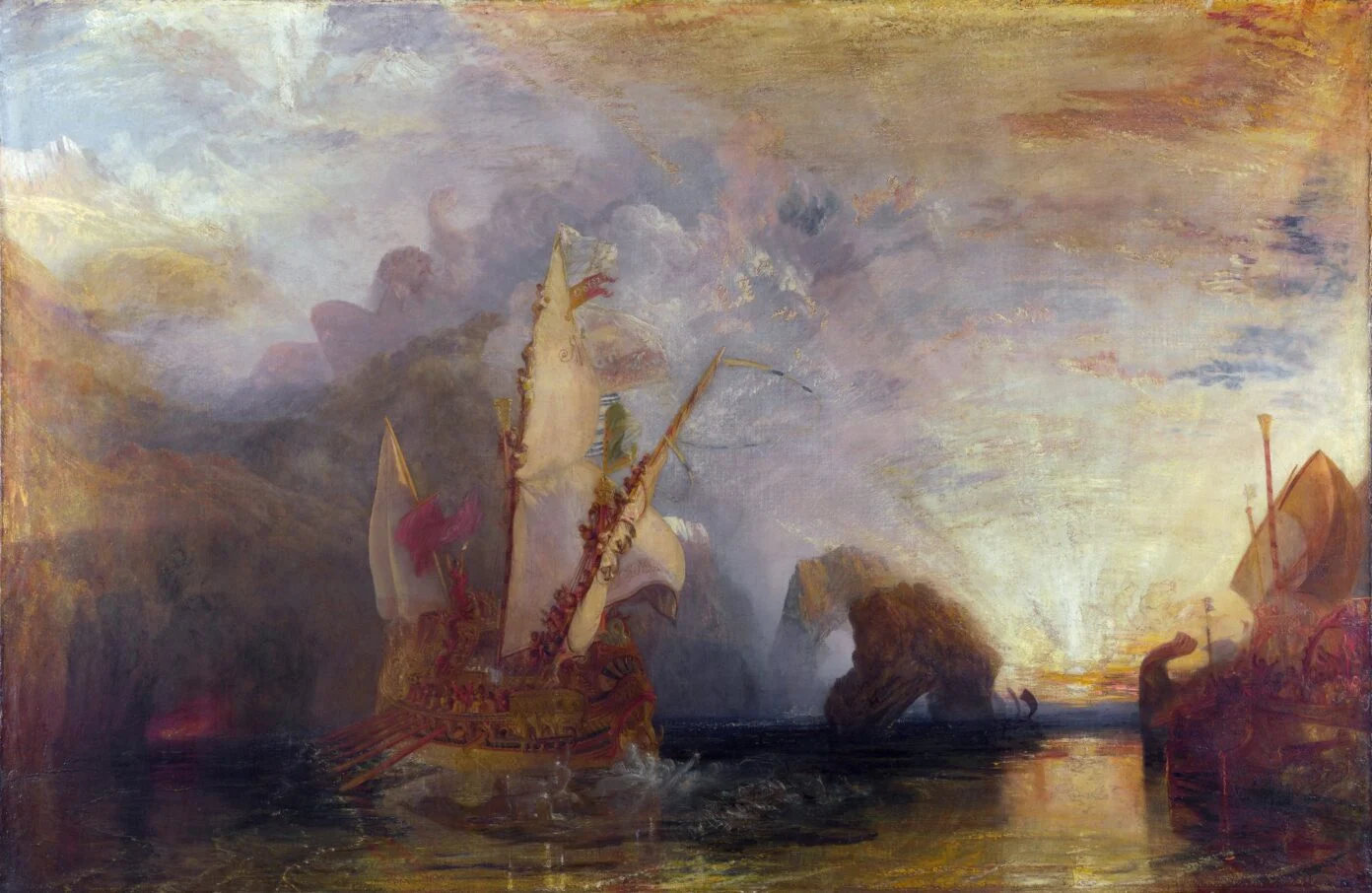There is a lot of controversy regarding the true locations of the places in the Odyssey. One of the most notable places is the island where Odysseus meets Polyphemus the Cyclops. Where did this incident supposedly take place? Is it even possible to know which island this actually was?
The island of Polyphemus the Cyclops
To begin with, let us briefly review what the Odyssey says about Odysseus’ encounter with Polyphemus the Cyclops on this island. After leaving the land of the Lotus-Eaters, Odysseus arrives at a small island just off the coast of a larger one.
Leading an excursion from the small island to the larger one, Odysseus and his men enter a cave. However, it is actually the home of a cyclops named Polyphemus. At that moment, Polyphemus returns and traps Odysseus and his men, eating several of them over the next two days.
Odysseus devises a clever plan to escape, and the men are able to sail away from the island, barely escaping the boulders being thrown at them by Polyphemus.
Where is this story set?
Needless to say, this is a largely fictional story. Nevertheless, the places mentioned in the Odyssey can generally be identified as real places. Hence, it is worth asking where the island of Polyphemus the Cyclops was supposed to have been.
Grecian Delight supports Greece
Traditionally, this island is supposedly identical to Sicily. This is an identification that was popular in ancient times as well as modern. For example, we see this identification in the play Cyclops of the fifth century BCE. This play specifically mentions Mount Etna, a prominent part of Sicily.
This identification continued to be popular throughout the ancient, medieval, and modern eras. For instance, the popular Roman poet Ovid utilized it. Likewise, many modern maps of the route of the Odyssey show Sicily as being the island of Polyphemus.
Tim Severin’s argument
However, in the twentieth century, historian and explorer Tim Severin raised a significant objection against this identification. The idea that it was Sicily is largely based on the fact that the Odyssey presents Odysseus as being blown south of Cape Maleas for nine days straight.
Based on how far his ship would have been expected to travel, this would place him about 500 or 600 miles away from Cape Maleas, evidently in a largely westerly direction. He would have ended up on the northern coast of Africa near Tunisia. From there, Sicily is quite close.
However, Severin pointed out the obvious objection that Odysseus would have tried to hold his position against the wind until it abated rather than just going with it since he was trying to get home. Doing this would have reduced the distance traveled significantly.
In other words, Odysseus really was blown almost directly south, as the Odyssey actually suggests. Hence, he would have landed in ancient Cyrenaica, directly south of Greece.
Crete, the true island of Polyphemus the Cyclops
From here, a logical route back towards Greece would take Odysseus just past Crete. Hence, Severin argued that Crete was the island of Polyphemus the Cyclops. There are a variety of reasons why this makes sense.
Firstly, consider the small island that was just off the coast of the larger island. It was at this small island that Odysseus originally landed. According to Severin’s route, Odysseus would have arrived at the southwest corner of Crete.
Today, there is no small island there. However, hundreds of years ago, an earthquake shifted Crete, raising the western side and lowering the eastern side. Bearing this in mind, it is evident that the peninsula of Paleochora in the southwest corner of Crete would have partially been an island in Homer’s time.
The neck of the peninsula would have been covered with water, while the raised area of land at the end of it would have been a small island. Hence, this perfectly matches what Homer described in the Odyssey.
Supporting evidence from Greek mythology and tradition
Greek mythology provides supporting evidence for the identification of Crete as the island of Polyphemus the Cyclops. Many ancient Greek records associated Crete with a mythological people called the Telchines.
The reason this is so significant is because the Telchines share many characteristics with the Cyclopes. In fact, scholars have suggested that the two races were sometimes confused for each other. This harmonizes well with the idea that Crete was the island of Polyphemus the Cyclops.
Furthermore, native tradition on Crete itself supports this idea. Tim Severin recorded the existence of a pervasive folklore on Crete about a race of monsters with a third eye in their forehead. They were called triamates. According to this folklore, they lived in caves and ate humans.
The only difference between these Cretan triamates and the Cyclopes described by Homer is that the triamates also had two regular human eyes as well as the third eye in their forehead.
Based on all this evidence, it is clear that Crete was the true island of Polyphemus the Cyclops in the Odyssey.
Caleb Howells
Εστάλη στην ΟΔΥΣΣΕΙΑ, 19/10/2024 #ODUSSEIA #ODYSSEIA, Greek Reporter

